Category / conferences
Upcoming conference: Rethinking the Business to Business (B2B) label
B2B marketing is an important sector in social sciences and relevant to many academics and practitioners. The B2B label has become out-dated; lacks focus, clarity and accuracy as a descriptive classification; and fails to inspire interest and enthusiasm. This event calls on marketers to rethink the B2B label by engaging relevant stakeholders: researchers, practitioners and educators, in an in-depth conversation on what B2B means today.

4th B2B colloquium – welcome talk by Dr Kaouther Kooli
Led by Dr Kaouther Kooli academics from the Department of Marketing, Faculty of Management (BU) and Professor Merlin Stone from St Mary’s University are co-organising a conference aimed at rethinking the Business to Business label. This event calls on marketers to rethink the B2B label by engaging relevant stakeholders: researchers, practitioners and educators, in an in-depth conversation on what B2B means today.
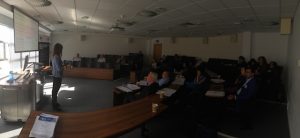
4th B2B colloquium – parallel session
The conference is taking place on 18thDecember 2017 at St Mary’s University Twickenham. The half day event will engage the B2B community (researchers, practitioners and educators) in an in-depth conversation on B2B marketing with the aim to define what B2B is and exchange new ideas about how to advance academic and practitioner thinking in this area.
Guest speakers include Professor Merlin Stone, Professor Len Tiu Wright (University of Huddersfield) and a senior B2B practitioner.
Round tables will be facilitated by Dr Kaouther Kooli, Dr Julie Robson and Dr Elvira Bolat, all of Bournemouth University and specialists in B2B marketing. A detailed programme can be downloaded in here.
Attendance is free. We are welcoming all academics, PhD candidates, UG and PG students as well as practitioners.
If you wish to attend, please confirm your attendance via email at merlin.stone@stmarys.ac.uk
Location: St Mary’s University, Twickenham, London. For instructions about getting to St Mary’s, see https://www.stmarys.ac.uk/contact/directions.aspx.
In that past three years, the B2B SIG (Academy of Marketing) has published two special issues in Journal of Customer Behaviour and Journal of Business and Industrial Marketing, featuring academic and practitioners’ research. At the moment Dr Kaouther Kooli is preparing new special issue for the Journal of Business to Business Marketing. If you wish to benefit from such amazing publishing and networking opportunities, do become a member of the SIG by emailing at kkooli@bournemouth.ac.uk or ebolat@bournemouth.ac.uk.
Faculty of Media and Communication PGR Conference
On 1st November, PGRs and supervisors gathered in the Share Lecture Theatre for the inaugural Faculty of Media and Communication PGR Conference. Proceedings were introduced by Professor Iain MacRury and Professor Candida Yates, who provided entertaining talks involving Dr Johnson’s reflections on academia, and the role of women academics. Then it was over to the PGRs to present papers on research as diverse as the role of Saudi women journalists and social media, the Italian cop thriller of the 1970s, understanding copyright law, and radio history.
Before lunch the opportunity to “Draw Your Ph D” was seized enthusiastically, and for half an hour the only sound was the scratching of biros whilst participants created some classic interpretations of the PhD experience in cartoon form. The results were extremely entertaining, and reminded us that most students experience similar traumas and joys during the PhD process.
D” was seized enthusiastically, and for half an hour the only sound was the scratching of biros whilst participants created some classic interpretations of the PhD experience in cartoon form. The results were extremely entertaining, and reminded us that most students experience similar traumas and joys during the PhD process.
After further papers in the afternoon, Dr Sue Sudbury delivered the key-note lecture, reflecting on her practice-led PhD, based on empowering women from Uttar Pradesh to make videos of their daily life. Finally, the wine reception at the end of the day provided further opportunities for networking.
This was a productive and enjoyable occasion, ably organised by third-year PGRs Katy Vaughan and Kate Terkanian. It is hoped that next year the organisational baton will be grasped by new students, so that this conference will become a yearly, student-led event.
Written by Jan Lewis (Postgraduate Research Administrator, Faculty of Media and Communication)
HSS PGR Reseacher- Elizabeth Waithaka at the Nursing World Conference 2017 in Las Vegas-Nevada
The Second Edition of the Nursing World Conference took place in the City of Las Vegas in the United States.
This forum brought together distinguished nursing scholars and nursing practitioners from across the globe. There was a wide representation of the various practice specialties including: nursing educators, nursing managers at the frontlines of care to country level chief nursing officers, clinical practitioners and consultant specialists, nursing researchers and thought leaders amongst other health and social care professionals.
There was also the odd anthropologist and whose presence and presentation reminded us of the importance of cross disciplinary work to foster continued development of nursing practice and theory.
I was privileged to make my first oral presentation at this conference in which I shared a select aspect of findings from a systematic review of the public health nursing evidence base for interventions targeted at children and young people. The findings revealed that contemporary public health nursing (PHN) interventions are typically individual level- behaviour change interventions- a finding with significant implications on PHN efforts in addressing inequalities in health.
This was a very exciting opportunity to be able to present my work and represent Bournemouth University as well as my supervisors Prof. Ann Hemingway, Dr. Karen Rees and Dr. Kate Harvey. It was also satisfying to see leading researchers have some interest in my work- and we had fruitful discussions with especially Dr. Araelis de Peralta-Clemson University, USA about our shared research interests in community health workers and health disparities.
I would like to extend my gratitude to Bournemouth University for sponsoring my participation and to the scientific committee for organizing a very well organised and resourceful event.
If you would like to learn more about our research project, please feel free to contact me at: ewaithaka@bournemouth.ac.uk
CMMPH student wins The Postgraduate Research Prize
Ms. Sheetal Sharma who will be graduating from Bournemouth University with a Ph.D. on November 10th has been awarded Bournemouth University’s The Postgraduate Research Prize. This prize is for the postgraduate student whose achievement is deemed by the Vice-Chancellor to have been most outstanding in their time at BU.
Sheetal stood out as a Ph.D. student as her maternal health research project in Nepal resulted in several many publications [1-6], some in very prestigious journals such as BMC Pregnancy & Childbirth [4] and PLOSOne [5] . She won the best poster prize at the international GLOW conference in Birmingham in 2013 with the poster presentation ‘Getting women to care in Nepal: A Difference in Difference analysis of a health promotion intervention’. She won a SBSP travel scholarship to present a poster at the 8th European Congress on Tropical Medicine & International Health in 2013 in Denmark. Sheetal’s abstract of the poster was also officially published [7].
Sheetal presented at the Science in Society conference (SiS) at Berkeley University in November 2012 where she received a Graduate Scholar Award. In addition, she won a Santander travel scholarships for £5,000 to learn about research at the University of Buenos Aires, Institute for Clinical Effectiveness & Health Policy (Argentina) and at the University of Barcelona in Spain. This scholarship resulted in a great publication with the world-famous researcher in reproductive health care prof. Jose Belizan as co-author. Sheetal also presented her work at the first ever national health promotion conference in Nepal.
Sheetal also had less academic achievements as she won the BU photo competition at the 2014 PGR conference with the photo in this blog. 
Sheetal was also actively involved as a student representative in the Faculty of Health & Social Sciences as well as in the Graduate School. She even found time to join the editorial board of the newly formed Journal of Asian Midwives.
Over the past five years Sheetal has had many mentions on this BU research blog as one of BU’s most prolific publishing PhD students.
As supervisors and co-authors we are proud of her!
Dr. Catherine Angell, Prof. Vanora Hundley & Prof. Edwin van Teijlingen (CMMPH)
BU Visiting Professor Padam Simkhada, Liverpool John Moores University
Dr. Elisa Sicuri, Assistant Research Professor at ISGlobal, Spain
Prof. Jose Belizan, University of Buenos Aires, Argentina
References to published work by Sheetal Sharma:
- Joshi, R., Sharma, S., van Teijlingen, E. (2013) Improving neonatal health in Nepal: Major challenges to achieving Millennium Development Goal 4, Health Science Journal 7(3): 247-257. http://www.hsj.gr/index.files/Page1421.htm
- Sharma, S., Joshi, P., van Teijlingen, E. (2015) ‘Nepenglish’ or ‘Nepali English’: A new version of English? Asian Journal of Humanities & Social Sciences 4(2): 188-193. www.ajssh.leena-luna.co.jp/AJSSHPDFs/Vol.4%282%29/AJSSH2015%284.2-21%29.pdf
- Simkhada, B., Sharma, S., van Teijlingen, E., Silwal, RC, Simkhada, P. (2015) Exploring Maternal Mortality Reduction. In: Wasti, SP, Simkhada, PP, van Teijlingen, E. (Eds.) The Dynamics of Health in Nepal, Kathmandu: Social Science Baha & Himal Books: 95-121.
- Sharma, S., van Teijlingen, E., Belizán, J.M., Hundley, V., Simkhada, P., Sicuri, E. (2016) Measuring What Works: An impact evaluation of women’s groups on maternal health uptake in rural Nepal, PLOS One 11(5): e0155144 http://journals.plos.org/plosone/article?id=10.1371%2Fjournal.pone.0155144
- Sharma, S., van Teijlingen, E., Hundley, V., Angell, C., Simkhada, P. (2016) Dirty and 40 days in the wilderness: Eliciting childbirth and postnatal cultural practices and beliefs in Nepal BMC Pregnancy & Childbirth 16: 147 https://bmcpregnancychildbirth.biomedcentral.com/articles/10.1186/s12884-016-0938-4
- Sharma, S, Simkhada, P, Hundley, V, van Teijlingen E., Stephens, J, Silwal, RC, Angell, C (2017) Evaluating a Community Maternal Health Programme: Lessons Learnt. Journal Asian Midwives 4(1):3–20.
- Sharma, S., van Teijlingen, E., Hundley, V., Stephens J., Simkhada, P., Angell, C., Sicuri, E., Belizan, J.M. (2013) Mixed-methods evaluation of a maternity care intervention in rural Nepal: measuring what works, Poster P.2.3.004 (A), Tropical Medicine & International Health 18 (Suppl. 1): 108–231.
Human rights study day in maternity care
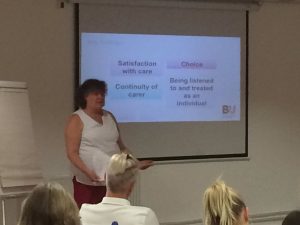 On 26th September the branch of the RCM in Southampton held a study day dedicated to considering human rights concerns in maternity care. It was attended by over 50 practitioners from across the region. Topics covered included a workshop by the human rights in maternity charity, Birthrights, and speakers from Barnados and Stop the Traffik. These latter presenters provided thought provoking, and somewhat harrowing, evidence for the need for awareness of sexual exploitation in young people, and trafficking of humans in our areas of practice. In addition Dr Jenny Hall (pictured right) from CEL and Jillian Ireland, visiting researcher in CMMPH, discussed the human rights of women with disability, based on current research partially funded by Birthrights, undertaken with colleagues Professor Vanora Hundley and Dr Bethan Collins from Liverpool University.
On 26th September the branch of the RCM in Southampton held a study day dedicated to considering human rights concerns in maternity care. It was attended by over 50 practitioners from across the region. Topics covered included a workshop by the human rights in maternity charity, Birthrights, and speakers from Barnados and Stop the Traffik. These latter presenters provided thought provoking, and somewhat harrowing, evidence for the need for awareness of sexual exploitation in young people, and trafficking of humans in our areas of practice. In addition Dr Jenny Hall (pictured right) from CEL and Jillian Ireland, visiting researcher in CMMPH, discussed the human rights of women with disability, based on current research partially funded by Birthrights, undertaken with colleagues Professor Vanora Hundley and Dr Bethan Collins from Liverpool University.
It was an intense event that demonstrated the importance of discussing and researching these aspects of current midwifery care.
Association for Psychosocial Studies Biennial Conference
Association for Psychosocial Studies Biennial Conference
Bournemouth University, 5th-7th April 2018

‘Psychosocial Reflections on a Half Century of Cultural Revolution:
The 50th anniversary of seasons of love and protest’
Now with new Open Stream on “ New Directions in Psychosocial Studies”
Join us to reflect on revolutionary relationships and politics which challenged authority then and which influence us now. The cultural forces and the political movements of 1967 and 1968 aimed to change the world, and did so. Where are we now? Recent developments of some populist and protest politics could be seen as a continuation of the revolutionary movements in the 1960s. Hedonic themes that recall the summer of love suffuse contemporary life, and self-reflection and emotional literacy have also become prominent values, along with more positive attitudes towards human diversity and the international community. We invite you to offer psychosocial analyses of the development and legacy today of the ‘revolutions’ in sex, personal life and politics. This could be via explorations of contemporary issues in politics, culture and artistic expression, or through historical studies. All proposals for papers must indicate how they address both psychological and social dimensions of their topic.
Due to popular demand, we have added a new open stream, for those who wish to submit proposals for papers, panels or visual art presentations on
“Current and New Directions in Psychosocial Studies”
Further details: http://aps2018.bournemouth.ac.uk/call-for-papers/
Send your abstract of 250-300 words to APS2018@bournemouth.ac.uk
Final deadline: 1st December 2017. Confirmation of acceptance: 1st Jan
(existing submissions, notified by 1st. November).
We welcome contributions from academics and practitioners from different fields and disciplines and very much look forward to seeing you there!
Research by BU undergraduate students has been recognised at the major conferences and at global research competition
Two major conferences held in Los Angeles in the middle of summer were attended by a small group from the National Centre for Computer Animation (NCCA) of the Faculty of Media and Communication. The group included Dr Valery Adzhiev and two students Quentin Corker-Marin (the course Computer Visualisation and Animation – CVA, Level 6) and Phil Gifford (the course Software Development in Animation, Games and Effects – SDAGE, Level 6).
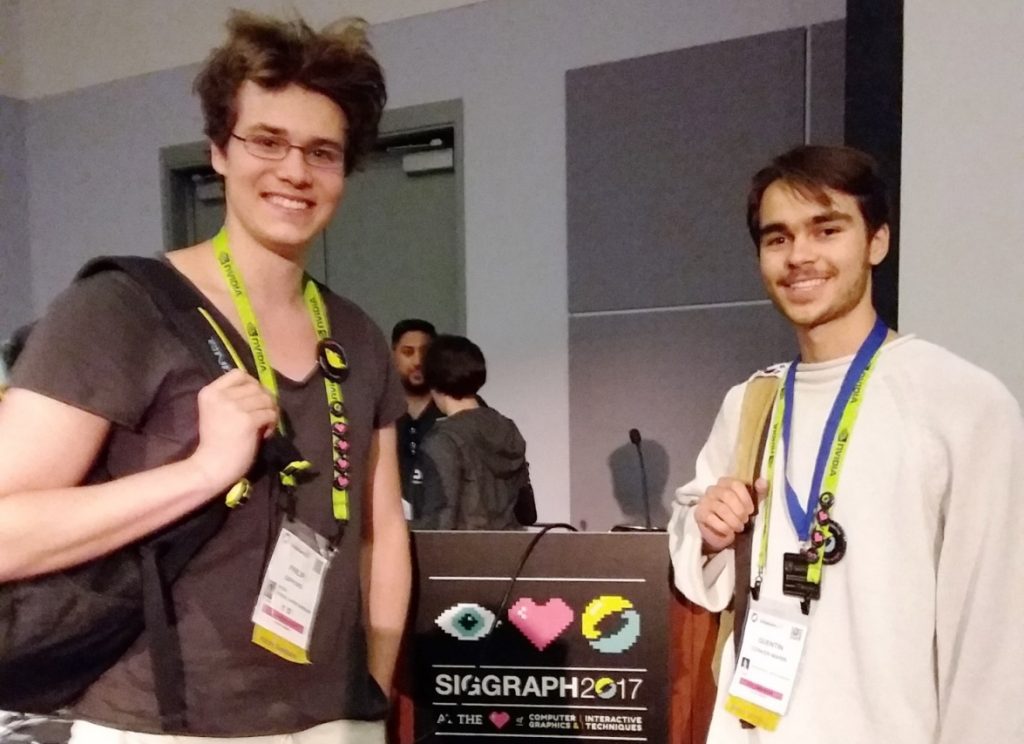
The students were there to present two posters at SIGGRAPH 2017 conference: “Space-Time Cubification of Artistic Shapes” by Quentin Corker-Marin (co-authors and supervisors Dr Valery Adzhiev and Prof Alexander Pasko) and “Interactive Parameterised Heterogeneous 3D Modelling with Signed Distance Fields” by Teemu Lindborg and Philip Gifford (co-author and supervisor Dr Oleg Fryazinov). Another paper “Cubification and Animation of Artistic Shapes” by Q. Corker-Marin, V. Adzhiev and A. Pasko was presented at the ACM SIGGRAPH / Eurographics Symposium on Computer Animation (SCA 2017) that took place at UCLA just before SIGGRAPH.
These were very different conferences. ACM SIGGRAPH / Eurographics Symposium on Computer Animation Symposium is a rather small-scale event (about 120 attenders) which has a reputation of a leading venue for R&D in Computer Animation. SIGGRAPH 2017 is the world’s leading annual interdisciplinary event showcasing the latest in computer graphics and interactive techniques. As usual, that was a huge endeavour with 20+ thousands attenders from 88 countries (including a real giraffe named Tiny who made two appearances as part of an animal drawing workshop), over 600 papers, courses, lectures, panels, installations, artworks, Animation Festival, VR theatre, Exhibition, etc. (all that selected from nearly 2,000 submissions from all around the world) and giving a platform to more than 1,800 speakers and contributors.
The official purpose of the SIGGRAPH Posters is “presenting novel research, art, and ideas to the global computer graphics community based on recently completed work or tentative new approaches” (official video). Note that is not “a student event” – quite a few established academics submit their work to it because it provides a lot of exposure (in particular, in terms of an immediate contact of the authors with attenders, and a lot of real experts are among them), although it has long been especially popular with PhD students who could test their ideas there. UG students’ submissions are accepted not often at all. All the submissions (many hundreds of them from all over the world) have been peer-reviewed and eventually 87 posters were accepted and published in the ACM Digital Library. The “cubist” poster had also been selected (as one of only ten) for presentation in the official “SIGGRAPH 2017 – Posters Preview” video that had been widely shown before and during the event.
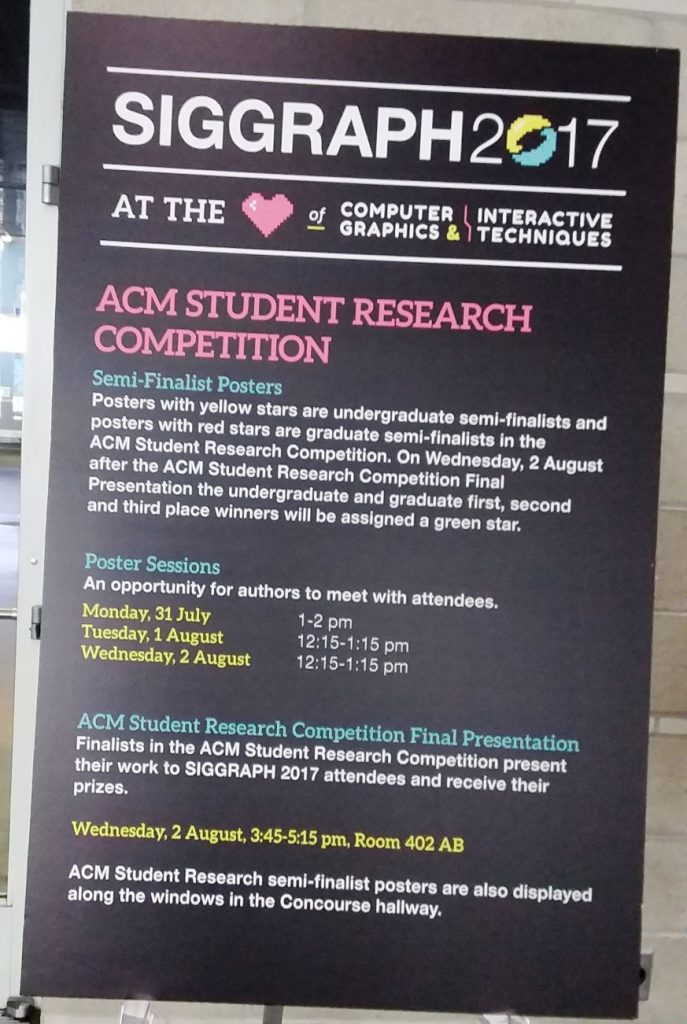
The students have also participated in the prestigious ACM Student Research Competition (SRC) sponsored by Microsoft. The result was a significant success: first, both posters were selected by “a panel of distinguished judges” (chaired by Deborah Fowler, Professor in the Visual Effects department, at Savannah College of Art and Design, US) as semi-finalists (just seven in UG category); then during the Posters sessions the judges talked to each of those semi-finalists (Phil and Quentin in our case) who had to answer their questions. Three UG students (Quentin among them) were invited into the SRC Final that was scheduled as a regular conference event to make a proper (conference-style) presentation in front of the Jury and the audience. Quentin was awarded with the second place (got the medal and the prize money) which can only be considered as an outstanding achievement.
A detailed report by Dr Valery Adzhiev can be downloaded from here. It includes author’s reflections on a much debated topic of involvement of UG students into research with a detailed description of how the project “Cubist Dynamic Sculpting” had been conducted and what was the specifics of cooperation of established researchers specialised in Computer Science with the student with mainly artistic background. The text also includes a detailed diary written by Quentin Corker-Marin with his impressions about the trip to Los Angeles.
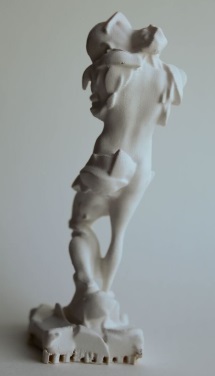
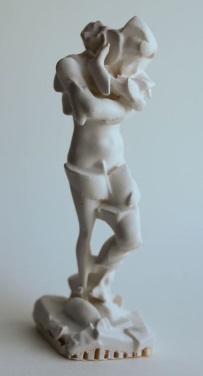
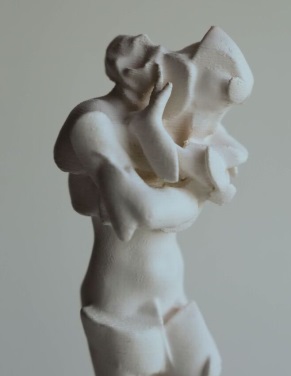
By Dr Valery Adzhiev, Principal Academic, NCCA, FMC
FMC Placement Development Advisor Vianna Renaud presents at the RAISE17 Conference in Manchester
Last week Faculty Placement Development Advisor Vianna Renaud presented at the RAISE17 Conference at Manchester Metropolitan University. 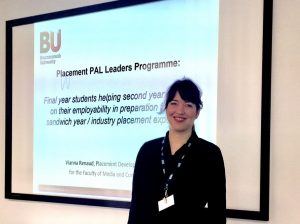 With over 235 delegates representing institutions throughout the UK and Ireland, this conference was focused on student engagement with the theme, “Perspectives on student engagement; looking forward..thinking back.” This was the perfect event to share best practice and information regarding the latest trends in the sector.
With over 235 delegates representing institutions throughout the UK and Ireland, this conference was focused on student engagement with the theme, “Perspectives on student engagement; looking forward..thinking back.” This was the perfect event to share best practice and information regarding the latest trends in the sector.
Presenting on the campus wide Placement PAL pilot project last year, it was a wonderful opportunity to share with colleagues from a variety of institutions. I found the conference to be of great benefit as there was an open and collaborative atmosphere in the room. The delegates were clearly passionate about this subject area with the same desire to share and learn with colleagues.
RAISE is a network of academics, practitioners, advisors and student representatives drawn from the Higher Education Sector who are working and/or interested in researching and promoting student engagement. For further information, conference programme and proceedings:
Conference on the impact of complications and errors in surgery held at BU
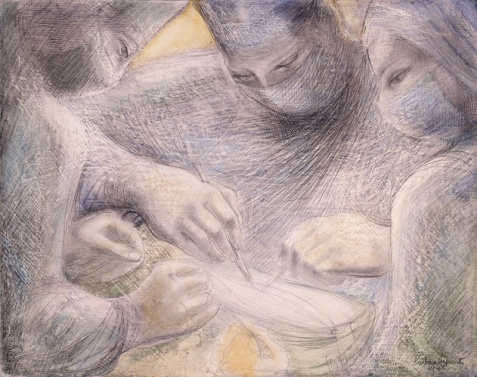 Things can go wrong in surgery, and dealing with the consequences of complications and errors is part and parcel of a surgeon’s life. Last week a conference was held at BU’s Executive Business Centre which explored the impact that adverse events have on surgeons and examined how these effects can be ameliorated. Eminent presenters from across the UK shared insights from their surgical careers and personal experiences, presented the latest research in the area, and considered how better support and training could be provided for surgeons.
Things can go wrong in surgery, and dealing with the consequences of complications and errors is part and parcel of a surgeon’s life. Last week a conference was held at BU’s Executive Business Centre which explored the impact that adverse events have on surgeons and examined how these effects can be ameliorated. Eminent presenters from across the UK shared insights from their surgical careers and personal experiences, presented the latest research in the area, and considered how better support and training could be provided for surgeons.
The conference was organised by the Bournemouth Adverse Events Research Team, a joint research venture between psychologists at BU and surgeons at Royal Bournemouth Hospital, who are currently researching the impact of complications and errors which inevitably arise during surgery on surgeons. Professor Siné McDougall, one of the research team, said: “Today is about trying to think about what we can do to support surgeons. When things do go wrong, the focus is rightly on patients and their family. However, surgeons are also dealing with their own feelings, particularly if they have made a mistake which they deeply regret.”
It was clear that the conference had touched on a key issue for surgeons. This was summed up by the keynote speaker, Professor Sir Miles Irving, Emeritus Professor of Surgery at Manchester University, who said “The proceedings were excellent and clearly demonstrated that you have latched on to a problem which has the potential to become even more significant if not addressed.” The Bournemouth Adverse Events Team is looking forward to continuing research in this area which will address this issue.
How did an archaeologist become a Research Assistant in the Faculty of Management?
My name is Shannon Birch-Chapman and I am currently a Research Assistant in the Faculty of Management at Bournemouth University, working on a QR funded project titled Trust Repair in the Service Sector.

Our team is investigating how organisations can repair trust following trust erosion, focussing on three highly publicised cases: 1) the treatment of staff at the main Sports Direct Warehouse in Derbyshire; 2) the Alton Towers rollercoaster crash that caused two women to have leg amputations; and 3) the mis-selling of PPI by banks. These are diverse case studies with different causes and severities of trust erosion and as such, our team consists of people with diverse backgrounds: two in finance (Dr Julie Robson and Samreen Ashraf), two in leisure and hospitality (Dr Caroline Jackson and Dr Elvira Borat), two in retail (Prof Juliet Memery and Dr Jason Sit) and me: an archaeologist!
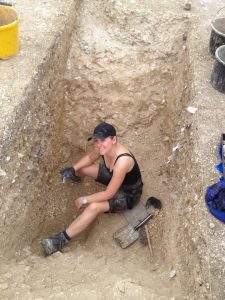
Figure 1. Excavating on the Bournemouth University Durotriges Project in 2013.
“How did an archaeologist become a Research Assistant in the Faculty of Management?” I hear you ask. Well, as any archaeology graduate knows, finding steady employment in archaeology following your degree (or in my case, an undergraduate degree, an honours degree, a masters and a PhD!) is almost impossible. The great thing about studying archaeology is that we learn a wide range of transferrable skills and are particularly good at sifting through large volumes of quantitative and qualitative evidence, and synthesising this to make informed conclusions. We are essentially the detectives of the past and, as such, make meticulous researchers.
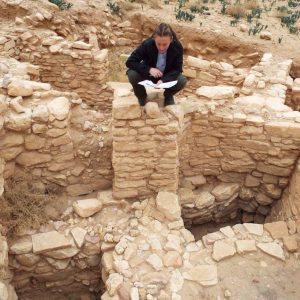
Figure 2. Surveying the architectural remains at the Pre-Pottery Neolithic site of Ba’ja in Jordan in 2015.
In this project, I have put my previous skills to good use, conducting literature searches; compiling and writing background information for our case studies, conference presentations and journal articles; devising the conceptual framework and hypotheses for our project, and linking these to the current theories; analysing data; and writing and presenting results.
I have also developed several new qualitative research skills, particularly relating to the gathering of data through consumer focus groups, stakeholder interviews and questionnaires. As someone who had never done qualitative research of this kind, it was an interesting process working out how to devise the right questions to ask. I hadn’t ever given much thought to how much effort goes into constructing these and analysing the outputs.
One of the most challenging and rewarding aspects of the research to date has been learning how to use NVivo: a program for analysing qualitative data. Our team attended a two day workshop with Ben Meehan from QDA Training, which was tailored for our project. It was then my job to ‘code’ and analyse the data from the consumer focus groups and some of the stakeholder interviews. I used a combination of template and thematic approaches, whereby participant responses were ‘coded’ into pre-existing and emerging themes. The themes related to definitions of trust, the cause and severity of trust erosion, specific trust repair strategies and the success of these for trust repair. Running queries on the coded data, we were able to determine the trust repair strategies that were most successful for each of our three case studies.
The project started around February this year and we have already had the opportunity to present our research at the 3rd International Colloquium on Design, Brand and Marketing (ICDBM) in April and at Bournemouth University’s Festival of Learning in July. We are presenting at the 3rd International Colloquium on Corporate Branding, Identity, Image and Reputation (COBIIR): Current and Future Trends, Developments and Challenges in September and have two journal articles in preparation. We are hoping that our results will guide best practice in industry and the team will be looking to work more directly with practitioners in the next stage of the research.
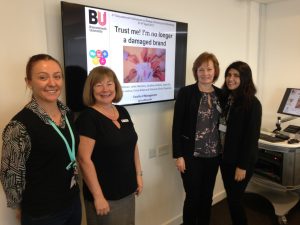
Figure 3. Presenting at the ICDBM conference in 2017 (left to right: Shannon Birch-Chapman, Caroline Jackson, Julie Robson and Samreen Ashraf).
As for me, I am nearing the end of my contract at Bournemouth University. Being a research assistant here has enabled me to apply and develop even stronger research skills beyond my discipline that I am sure will help me in my search for future employment. I wonder what interesting things I will be researching next…
To follow Trust Repair project, tweet at @TrustRepairBU
Conference papers
Bolat, E., Robson, J., Ashraf, S., Birch-Chapman, S., Sit, J., Memery, J. and Jackson, C., 2017. Corporate brand rehab: Diagnosing trust repair mechanisms in the service sectors. Paper to be presented at the 3rd International Colloquium on Corporate Branding, Identity, Image and Reputation (COBIIR): Current and Future Trends, Developments and Challenges. 7th-8th September 2017.
Robson, J., Memery, J., Jackson, C., Sit, J., Bolat, E., Ashraf, S., Birch-Chapman, S., 2017. Trust Me: I’m no longer a damaged brand. Paper presented at the 3rd International Colloquium on Design, Brand and Marketing (ICDBM), Bournemouth University, 5th Apr 2017.
REF & TEF: the connections – 11th October 2017
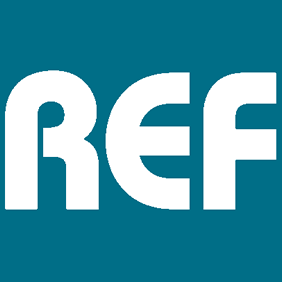
The outcomes of this year’s Teaching Excellence Framework (TEF) and the direction for the Research Excellence Framework (REF) as set out in the 2017 consultation response are likely to have significant implications for the higher education sector. The links between research and teaching are likely to become ever more important, but set against the context of increasing emphasis on student experience, how should the sector respond and where should it focus?

REF & TEF: the connections will be hosted at Bournemouth University and will bring together some of the leading experts in higher education in both research and teaching policy. During the morning, attendees will have the opportunity hear from experts from across the higher education sector, as they share their insights into the importance of the links between teaching and research. The afternoon will feature a number of case studies with speakers from universities with a particularly good record of linking research and teaching.
Speakers confirmed to date include Kim Hackett, REF Manager and Head of Research Assessment, HEFCE and John Vinney Bournemouth University, William Locke University College London, Professor Sally Brown Higher Education Academy.
For more information or to book on visit: https://reftef.eventbrite.co.uk

What happens when things go wrong in medicine?
1-day BU conference/workshop examining what happens when things go wrong in surgery, 8th September 2017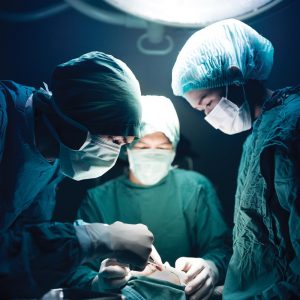
Every day we make mistakes; we pick up the wrong set of keys from the kitchen drawer, pick up the wrong identical suitcase from the airport carousel, or, in the case of the Oscars, a near identical envelope is given to Warren Beatty who then announces the wrong Best Film winner.
What happens when things go wrong in surgery where the consequences can be much more serious? While attention, quite rightly, focuses on patient need when things go wrong, the aim of this event is to examine how medical professionals can be better supported and trained to cope with these adverse events.
Eminent speakers from around the UK will present the latest research in the area, share insights from their surgical careers and personal experiences and will consider:-
Impact – The personal impact when complications and errors arise in surgery
Resilience – Dealing with stress and maintaining wellbeing
Restoration – what can be done when things go wrong?
While the focus is on surgeons, it is clear that those in other medical professions (e.g. nurses, midwives, GPs) face similar issues in the workplace. Anyone with an interest in the topic is welcome to attend (attendance is free for BU staff). For further details and to register for the conference please visit www.surgeonwellbeing.co.uk or contact Professor Siné McDougall (smcdougall@bournemouth.ac.uk; ext. 61722).
BU’s PhD student Juan Camilo Avendaño Diaz and Dr. Xun He presented their research at the 7th Joint Action Meeting.
On July 22-26, Dr. Xun He and Juan Camilo Avendaño Diaz (PhD student) attended the 7th bi-annual Joint Action Meeting (JAM), held at Queen Mary University of London. This meeting brought together researchers from many different fields (psychologists, philosophers, physicists, musicians, engineers and neuroscientists, just to name a few), interested in studying people’s ability to act together (they had a full day covering human-robot interaction as well!).
Dr. Xun He gave a talk titled “A dual-EEG study of the shared attention effect in dyads: Sensory processing or top-down control?”, examining the information processing in the brain when people co-attend to the same spatial locations. Juan Camilo presented the poster “Visual attention in dyads: The role of group membership”, suggesting that co-attending with members of the same vs. different social group could have distinct effects on visual attention.
Attending JAM 2017 was a great opportunity to meet some key figures in the field, and to hear and discuss about the research that is been performed worldwide, including the research carried out at BU.
If you would like to learn more about our research, please do not hesitate to contact me at javendanodiaz@bournemouth.ac.uk
Helping surgeons when things go wrong
1-day BU conference examining the effect of adverse events on surgeons, 8th September 2017
A group of BU researchers are working in partnership with Royal Bournemouth Hospital to carry out research examining the consequences of complications and errors on surgeons’ lives. On September 8th 2017 we are holding a one day conference to highlight the effects of dealing with adverse events. We have been fortunate in attracting eminent speakers from around the UK to contribute to the conference which will be held at the Executive Business School on the Lansdowne Campus.
- Sir Miles Irving (Emeritus Professor of Surgery, Manchester University)
- Dr Clare Gerada (Medical Director, NHS Practitioner Health Programme)
- Professor Debbie Cohen (Director, Centre for Physician Health, Cardiff University)
- Dr Mike Peters (Medical Director, BMA Doctors for Doctors Unit)
- Dr Suzanne Shale (Medical ethicist advising national bodies following healthcare harm)
Speakers will present the latest research in the area, share insights from their surgical careers and personal experiences, and consider how better support and training can be provided for surgeons.
If you are interested in attending (attendance is free for BU staff) or would like to know more please visit www.surgeonwellbeing.co.uk or contact Professor Siné McDougall (smcdougall@bournemouth.ac.uk; ext. 61722).
Xiaosong Yang attends the Computer Graphics International 2017 in Yokohama, Japan
Thanks to the QR funding from the Faculty of Media and Communication, I recently had the privilege to attend the Computer Graphics International 2017 in Yokohama, Japan. CGI is a prestigious conference in the graphics world for many years and attracts interest from people all over the world. We have one paper presented on the conference, as a full paper, it will be published in the Visual Computer Journal by Springer-Verlag.
We have hosted the CGI2012 at Bournemouth. CGI2017 is held at Keio University, Yokohama chaired by Prof. Issei Fujishiro and Prof. Xiaoyang Mao. The first day (27th June) events are majorly tutorials and workshops. The shining part is the keynote by Prof. Marina Gavrilova from University of Calgary, discussing how to use machine learning for social data analysis through image and video processing, especially multiple modal biometric data acquisition, feature matching, fusion and recognition. One interesting application is gender prediction using image aesthetics.
The second day’s keynote is “reconstructing reality: from physical world to virtual environments” by Prof. Ming Lin from University of North Carolina. She firstly gave an introduction on the history of VR and AR, then talked about her work on human tissue material property estimation from real surgery videos, virtual dressing, crowd and traffic pattern learning from videos of real world, finally the sound and haptic rendering in VR environment. Daniel Thalmann (chair of the conference) held the panel discussion on the future of machine learning in graphics. There were lots of other paper presentations on the second day covering many topics including image, texture, modelling, rendering, deformation and visualization.
The third day’s keynote is “Studies on Humanlike robots” by Prof. Hiroshi Ishiguro. He showed the latest state-of-the-art robot in Japan, the mimic version of himself. Obviously lots of small human robots have been used in some restaurants to entertain guest during food ordering. My student Tao Jiang presented his paper in the morning session.
I chaired a session on the fourth day on papers working on image & example based modelling. There are also some posters presented during the conference.
This is a very good opportunity to network with top experts in the world. I had good chat with many people such as Prof. Henry Fuchs (Guru in the VR world), Prof. Ming Lin, Prof. Marina Gavrilova, Prof. Kwan-Liu Ma (leading expert in the visualization, chaired the top visualization conferences in the world), Prof. Shimin Hu (Tsinghua University), Prof. Enhu Wu (Chinese Academy of Science), and also some other experts from Taiwan, Singapore, South Korea, USA and China etc. There is also a discussion with a professor from German about collaboration on 3D living environment reconstruction from old photos for dementia patient/old people. This is a very exciting and intensive experience for four full days, sharing different ideas, building links and research collaborations.

Why Yawning is Important in Studying Multiple Sclerosis by Dr Simon Thompson
What is MS?
Multiple Sclerosis (MS) is a chronic debilitating and progressive condition that affects the fatty tissue sheath surrounding nerves. Loss of the myelin sheath is largely responsible for uncoordinated movements because the nerves cannot transmit signals smoothly across the complex neural circuitry. A common symptom of MS is excessive yawning together with fatigue.
Research study
Following recent completion of a study at the Osborne Centre, West Parley, we found that people with MS had higher cortisol levels when yawning compared with healthy participants.
Previous research at Bournemouth University
This research follows several years of research by the author at Bournemouth University with the first report on the “yawning envelope”, identifying the electrical trace during yawning (Refs. 1-2), and the first report on the association between yawning and cortisol levels following provoked yawning (Refs. 3-6).

Yawning “envelope”
“Contagious” yawning is seen in animals as well humans; it may involve empathy to perceived social cues in humans.

Yawning: (clockwise) Fox, Pig, Human, Hippopotamus



A series of 3 Q and A events with talks about findings was held at the MS Society local branch which facilitated an interesting and lively debate among participants, researchers and staff at the Centre.
Further research planned
We believe that threshold levels of cortisol trigger the yawn response which lowers brain temperature, particularly important in MS where brain temperatures can be elevated considerably following fatigue. A funding bid is in preparation to examine early detection of MS using these findings.
About the author
Simon B N Thompson is Associate Professor, Bournemouth University; and Visiting Professor, Université Paris Ouest Nanterre La Défense, France. He has presented to His Excellency Bernard Emié, the French Ambassador at the French Embassy, signalling formation of the Anglo-French International Scientific Council for Research into Multiple Sclerosis.
Acknowledgements
Thanks to all volunteers; Alister Coleman and Nicola Williams for assisting in data collection and analysis; Rod Slip, Group Co-ordinator and Kay Bundy, Fundraising Co-ordinator of the MS Society Osborne Centre for providing free facilities.
References
1. Thompson, S.B.N., 2013. How to catch a yawn: initial observations of a randomised controlled trial. WMC Neurology, 4(8), doi: 10.9754/journal.wmc.2013.004371.
2. Thompson, S.B.N., Frankham, C., & Bishop, P., 2014. The art of capturing a yawn using the science of nerve impulses and cortisol levels in a randomized controlled trial. Thompson Cortisol Hypothesis as a potential predictor of neurological impairment. International Journal of Arts & Sciences, 7(3), 529-543.
3. Thompson, S.B.N., 2011. Born to yawn? Cortisol linked to yawning: a new hypothesis. Medical Hypotheses, 77, 861-862.
4. Thompson, S.B.N., & Bishop, P., 2012. Born to yawn? Understanding yawning as a warning of the rise in cortisol levels: randomized trial. Interactive Journal of Medical Research, 1(2), e4, 1-9, doi: 10.2196/ijmr.2241.
5. Thompson, S. B. N., Daly, S., Le Blanche, A., Adibi, M., Belkhiria, C., Driss, T., de Marco, G., 2016. fMRI randomized study of mental and motor task performance and cortisol levels to potentiate cortisol as a new diagnostic biomarker. Journal of Neurology & Neuroscience, 7(2); 92: 1-8.
6. Thompson, S.B.N., 2017. Hypothesis to explain yawning, cortisol rise, brain cooling and motor cortex involvement of involuntary arm movement in neurologically impaired patients. Journal of Neurology & Neuroscience, 8(1); 167: 1-5.
Performance of Gemmeleg at NIME 2017, Copenhagen

Rehearsal in the Black Diamond
Gemmeleg is a composition by Laura Reid cellist/composer for the performance system The Feral Cello developed by Dr Tom Davis.
This piece was performed at the prestigious Black Diamond concert venue in Copenhagen as part of the international conference on New Interfaces for Musical Expression, NIME.
The Feral Cello is a performance system developed by Tom Davis that incorporates machine listening and actuated feedback to alter the response of an acoustic cello in real time during a performance. A description of the performance system was also presented as a poster at the conference.
Previous performances have been at NoiseFloor 2017, Staffordshire University.

The Black Diamond Venue
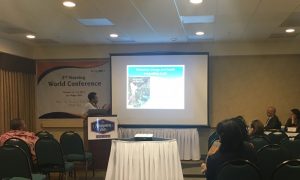
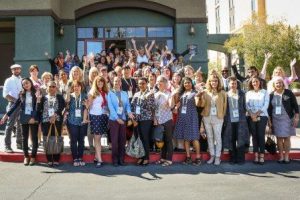











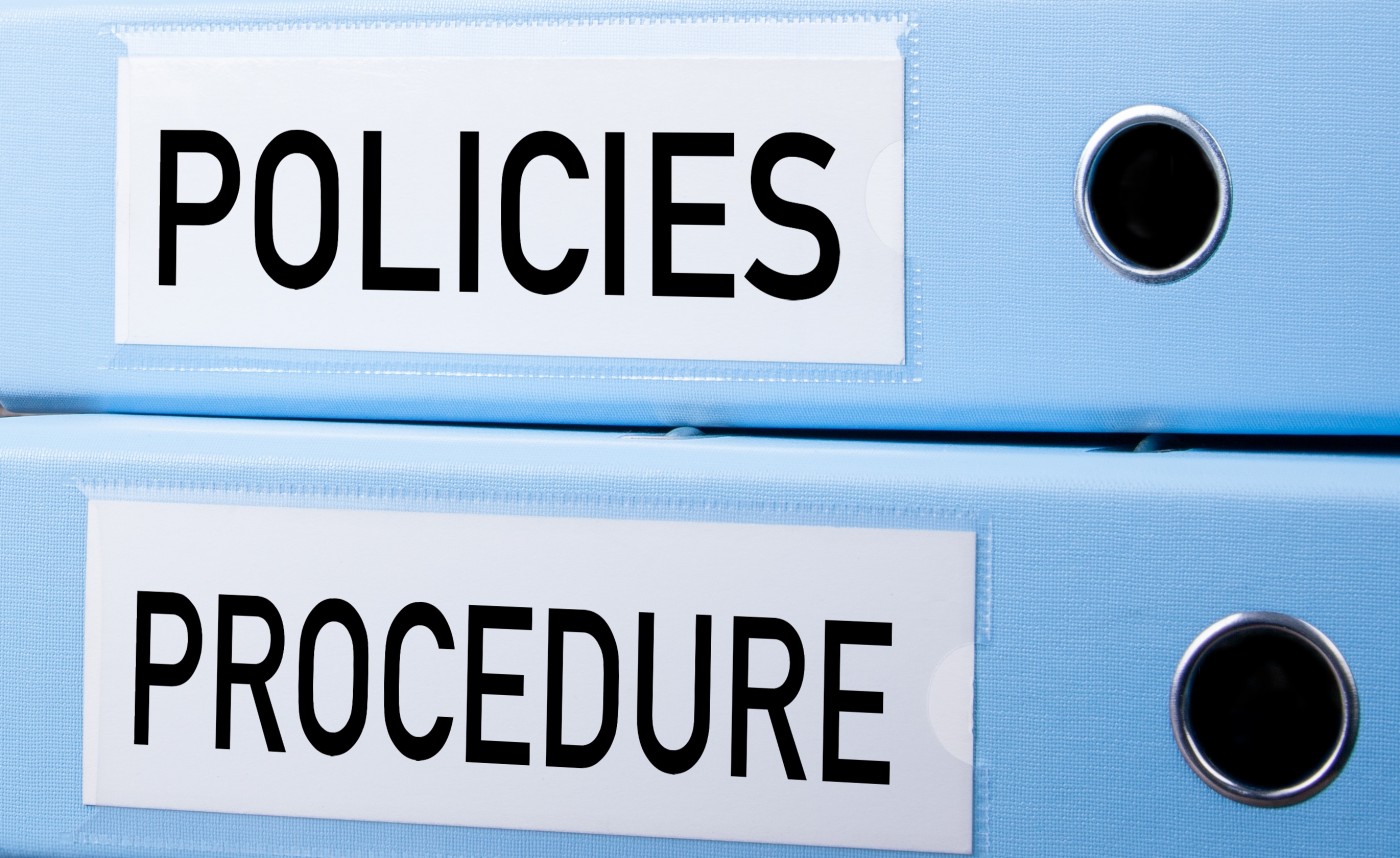
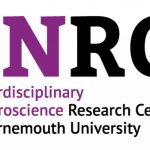 Fourth INRC Symposium: From Clinical Applications to Neuro-Inspired Computation
Fourth INRC Symposium: From Clinical Applications to Neuro-Inspired Computation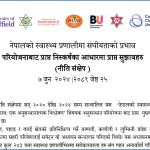 Writing policy briefs
Writing policy briefs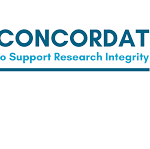 Upholding Excellence: The Concordat to Support Research Integrity
Upholding Excellence: The Concordat to Support Research Integrity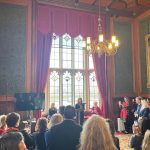 Today’s Documentation Will Serve Tomorrow’s Justice
Today’s Documentation Will Serve Tomorrow’s Justice Up2U: New BU academic publication
Up2U: New BU academic publication ECR Funding Open Call: Research Culture & Community Grant – Application Deadline Friday 12 December
ECR Funding Open Call: Research Culture & Community Grant – Application Deadline Friday 12 December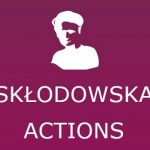 MSCA Postdoctoral Fellowships 2025 Call
MSCA Postdoctoral Fellowships 2025 Call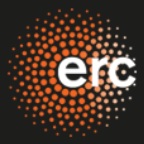 ERC Advanced Grant 2025 Webinar
ERC Advanced Grant 2025 Webinar Horizon Europe Work Programme 2025 Published
Horizon Europe Work Programme 2025 Published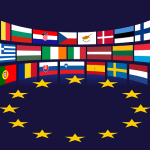 Horizon Europe 2025 Work Programme pre-Published
Horizon Europe 2025 Work Programme pre-Published Update on UKRO services
Update on UKRO services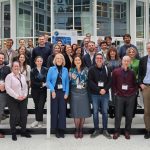 European research project exploring use of ‘virtual twins’ to better manage metabolic associated fatty liver disease
European research project exploring use of ‘virtual twins’ to better manage metabolic associated fatty liver disease